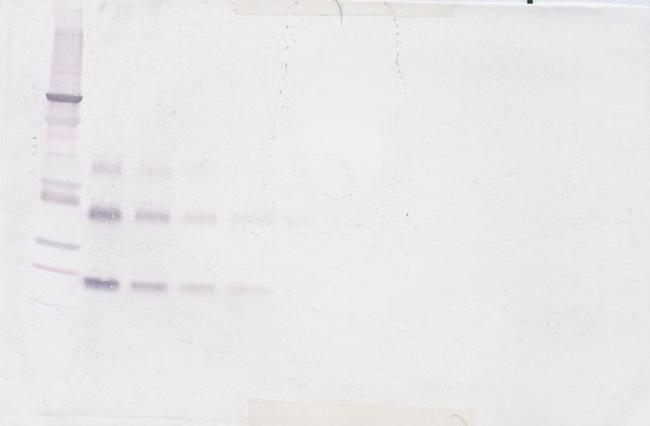Search Thermo Fisher Scientific
图: 1 / 3
TNFRSF11B Antibody (500-P149BT-25UG) in WB



产品信息
500-P149BT-25UG
种属反应
宿主/亚型
分类
类型
抗原
偶联物
形式
浓度
纯化类型
保存液
内含物
保存条件
运输条件
RRID
产品详细信息
AA Sequence of recombinant protein: METFPPKYLH YDEETSHQLL CDKCPPGTYL KQHCTAKWKT VCAPCPDHYY TDSWHTSDEC LYCSPVCKEL QYVKQECNRT HNRVCECKEG RYLEIEFCLK HRSCPPGFGV VQAGTPERNT VCKRCPDGFF SNETSSKAPC RKHTNCSVFG LLLTQKGNAT HDNICSGNSE STQK.
Preparation: Produced from sera of rabbits immunized with highly pure Recombinant Human OPG. Anti-Human OPG-specific antibody was purified by affinity chromatography and then biotinylated.
Sandwich ELISA: To detect Human OPG by sandwich ELISA (using 100 µL/well antibody solution) a concentration of 0.25-1.0 µg/mL of this antibody is required. This biotinylated polyclonal antibody, in conjunction with PeproTech Polyclonal Anti-Human OPG (500-P149) as a capture antibody, allows the detection of at least 0.2-0.4 ng/well of Recombinant Human OPG.
Western Blot: To detect hOPG by Western Blot analysis this antibody can be used at a concentration of 0.1-0.2 µg/mL. Used in conjunction with compatible secondary reagents the detection limit for Recombinant hOPG is 1.5-3.0 ng/lane, under either reducing or non-reducing conditions.
500-P149BT-1MG will be provided as 2 x 500 µg
靶标信息
The protein encoded by this gene is a member of the TNF-receptor superfamily. This protein is an osteoblast-secreted decoy receptor that functions as a negative regulator of bone resorption. This protein specifically binds to its ligand, osteoprotegerin ligand, both of which are key extracellular regulators of osteoclast development. Studies of the mouse counterpart also suggest that this protein and its ligand play a role in lymph-node organogenesis and vascular calcification. Alternatively spliced transcript variants of this gene have been reported, but their full length nature has not been determined.
仅用于科研。不用于诊断过程。未经明确授权不得转售。
篇参考文献 (0)
生物信息学
蛋白别名: MGC29565; Osteoclastogenesis inhibitory factor; Osteoprotegerin; soluble OPG; soluble Osteoprotegerin; sOPG; Tumor necrosis factor receptor superfamily member 11B; tumor necrosis factor receptor superfamily, member 11b
基因别名: OCIF; OPG; PDB5; TNFRSF11B; TR1
UniProt ID: (Human) O00300
Entrez Gene ID: (Human) 4982



